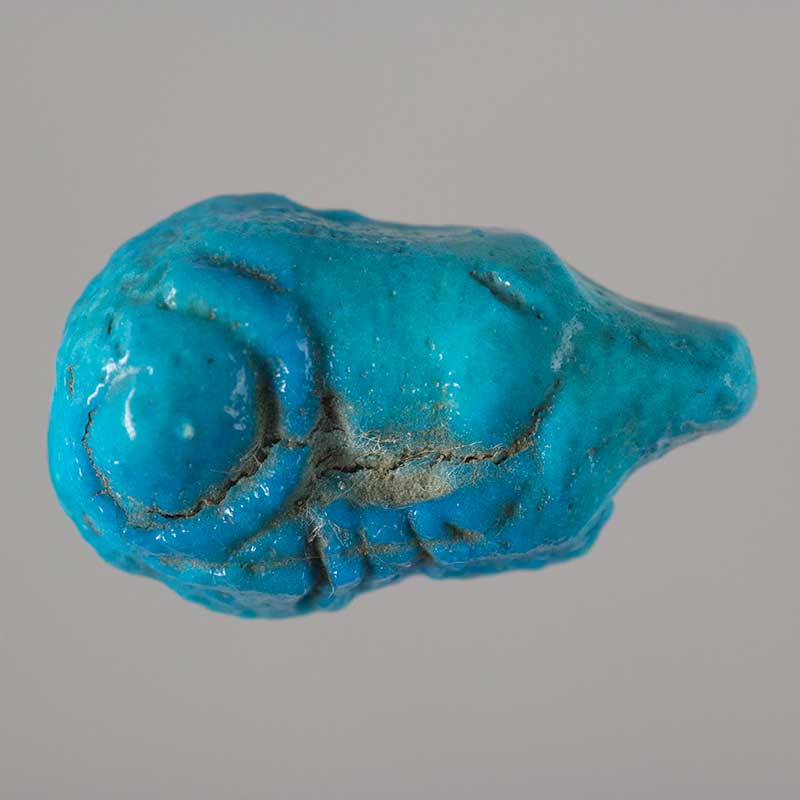Providing for the Afterlife: Ancient Egyptian works from Eton College
Faience Amulets
By Evan Smith, Jordan Poston, Meg Swaney and Sanchita Balachandran



Description
These three faience amulets were all likely found in foundation deposits from the mortuary temple of Queen Tawosret in Thebes, who ruled as an independent female monarch at the end of the 19th Dynasty (ca. 1188-1186 BCE). Such deposits were made prior to the consecration of a new building and contained the burial of votive objects, such as model tools, vessels containing different foodstuffs, and meat offerings. The headless ox amulet (ECM 1078), representing a trussed ox with its tail curling up around its rear haunch, represents one such food offering and is likely associated with the slaughter of cattle that accompanied the building foundation ceremonies. The head of an ox (ECM 1084), which faces to the right and lacks any trace of a neck, likely has similar associations. Likewise, the duck amulet (ECM 1066) portrays this bird laid out on its back with its wings splayed out on either side presented as an offering. Images had power in ancient Egypt, and in a votive context these faience amulets were thought to be just as effective as the food offerings they represent.
Technical Research
All three objects were examined by undergraduate students Jordan Poston and Evan Smith. These amulets were fabricated by pressing damp Egyptian faience paste into one-sided molds; this is clear from the fact that there is only one decorated surface, and the backs of the objects show pressure from being pressed in place, or warpage as the faience paste dried and shrank. The overflow of faience paste on the edges of the duck amulet (top left) suggests that the excess was not removed and that the edges were not finished as they were in the two ox amulets below. All three amulets retain the glossy sheen of their copper-based colorants.